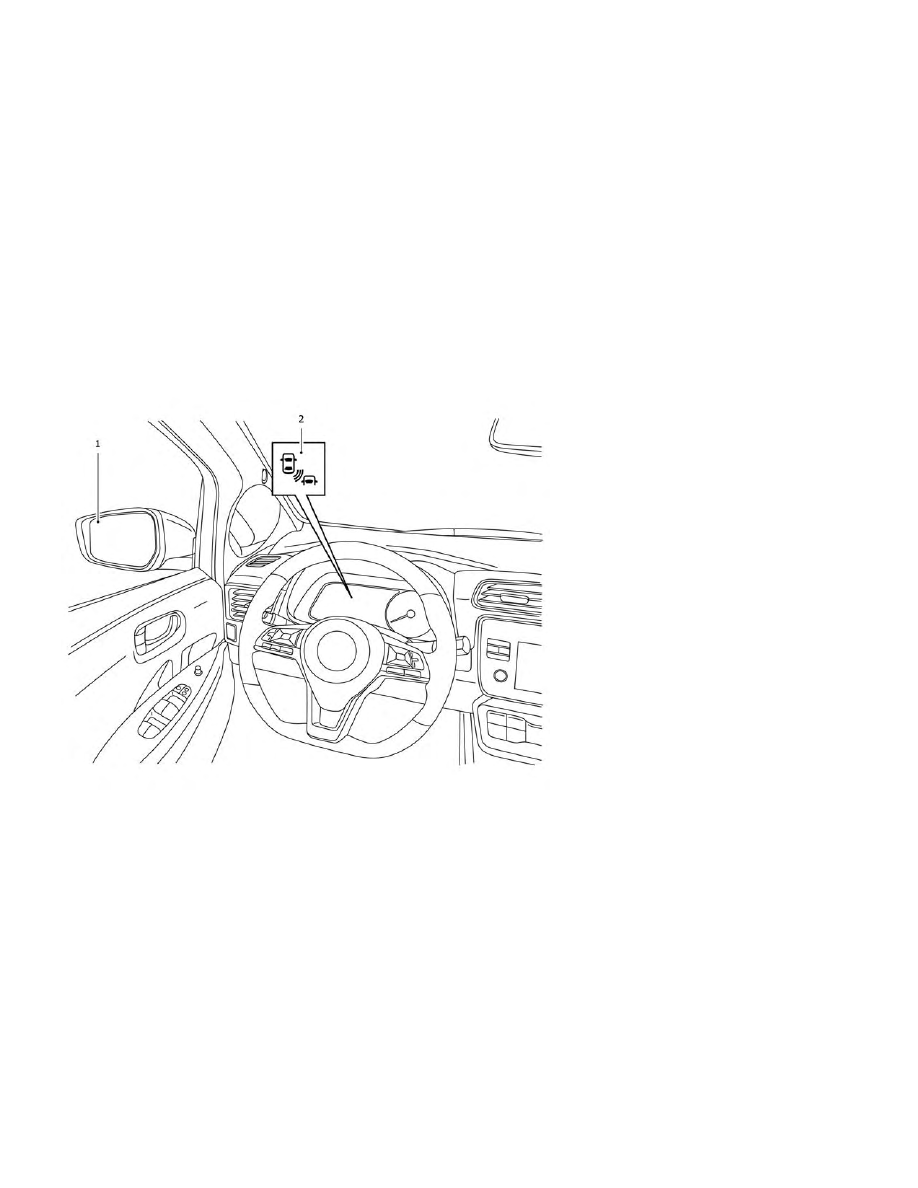Nissan Leaf (2019 year). Instruction - part 24

BSW SYSTEM OPERATION
1. Side BSW/RCTA Indicator Light
2. BSW/RCTA Indicator
The BSW system operates above approxi-
mately 20 mph (32 km/h).
If the radar sensors detect a vehicle in the
detection zone, the side BSW/RCTA indica-
tor light (1) illuminates. If the turn signal is
then activated, the system chimes (twice),
the side BSW/RCTA indicator light flashes,
and the BSW/RCTA indicator (2) illuminates
(yellow) in the vehicle information display.
The side BSW/RCTA indicator light contin-
ues to flash until the detected vehicle
leaves the detection zone.
The side BSW/RCTA indicator light illumi-
nates for a few seconds when the power
switch is placed in the ON position.
The brightness of the side BSW/RCTA indica-
tor light is adjusted automatically depending
on the brightness of the ambient light.
If a vehicle comes into the detection zone
after the driver activates the turn signal,
then only the side BSW/RCTA indicator light
flashes and no chime sounds. For addi-
tional information, refer to “BSW driving
situations” in this section
The BSW system automatically turns on
every time the EV system is started, as long
as it is activated using the settings menu
on the vehicle information display.
5-38
Starting and driving